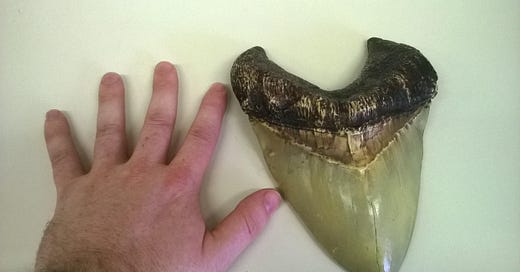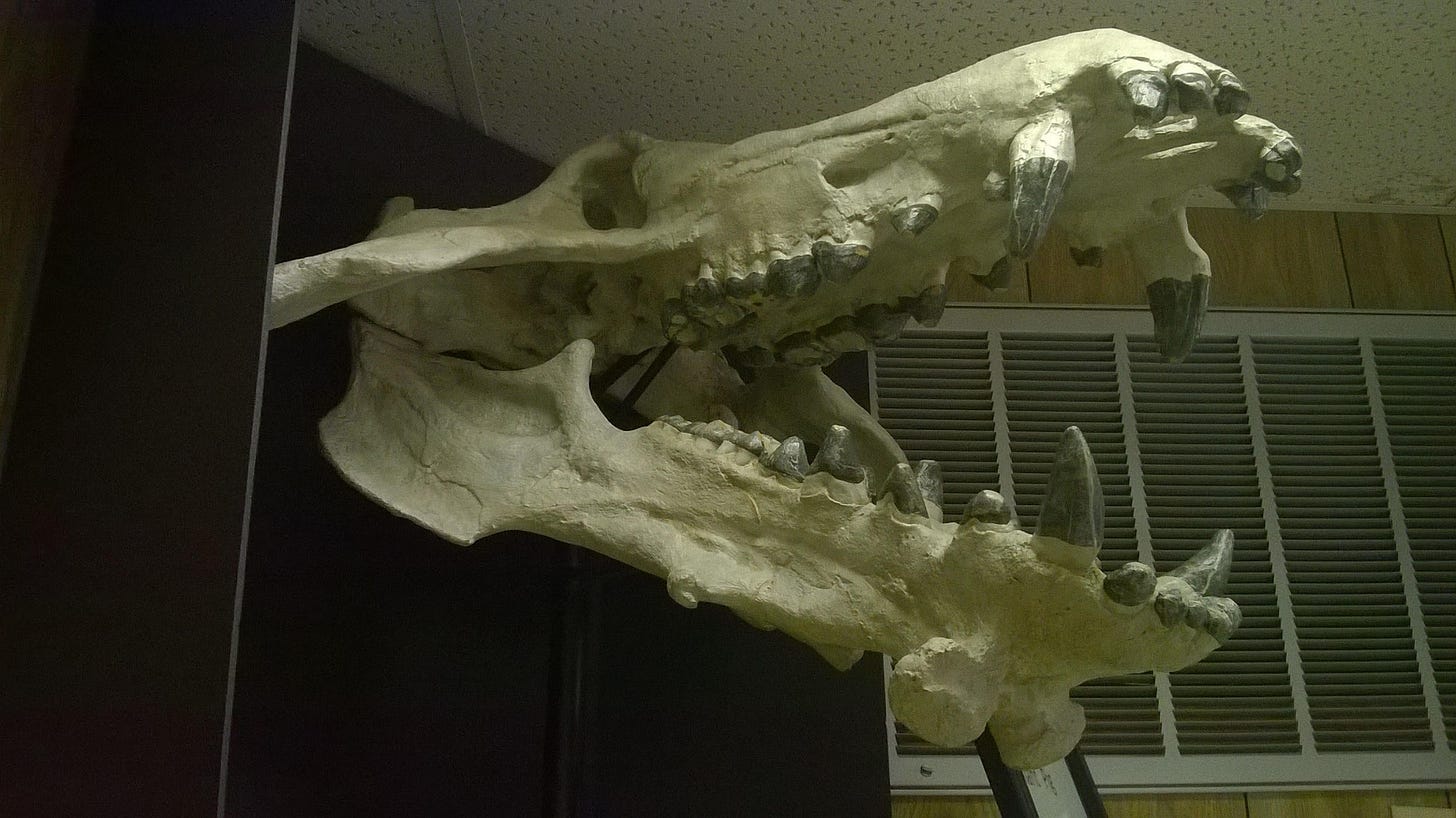From 2013 to 2015 I visited Camp Bayou County Park in Ruskin, Florida many times. I returned in February 2016, but this time I went when the Paleo Preserve Fossil Museum was open. Florida has very few fossils from earlier than the Pleistocene, when there were giant pigs and Megalodon sharks, so the Velociraptor skull they have had to be brought in from elsewhere. Everywhere there are bits and pieces that used to be inside alligators, crocodiles, horses, llamas, and mammoths. On the floor was a mammoth tusk that probably weighs more than I do. There are original bones, mineralized bones, and resin casts. There are also many mollusks and echinoderms (sea biscuits!) represented, as well as agatized coral, Florida’s official state fossil and stone. I had never heard of such a thing. As it turns out, there are seven states without official fossils, including New Hampshire and Rhode Island, which along with Florida are the states I’m most familiar with. Ammonite shells can be bought for three dollars. There are also horse teeth, shark’s teeth, and more that can be bought for between two and ten dollars. The non-profit that runs the park is always looking for donations.
Later I took a quick walk down one of the trails. The palmetto around rustles very loudly with the slightest movement. What I thought was a giant, prehistoric pig crashing through the undergrowth turned out to just be a squirrel. I stopped to look at a plant and a grasshopper jumped near my face with a loud pop and flapping of wings. I also saw an osprey in a tree and we stared at each other. Besides the interesting animal life, there are many dried palms on the edge of the park that can be whittled down to make excellent swords. Add some sound effects, and they become light sabers. My imaginary friend was so impressed with my skills that he refused to fight. Why won’t anyone play with me? :(






The weblog GeorgiaBeforePeople has some interesting info about the discovery of fossils in the Tampa Bay region and I believe this is the source of a lot of the Museum's exhibits.
During the late 1970s, Frank Garcia and other amateur fossil collectors often searched the spoil piles of the Leisey Shell Pit located about a mile east of Tampa Bay, Florida. The Leisey family owned the site and mined the sand and seashells which are used in construction to make concrete and other building materials. One day, Mr. Garcia discovered a wall of fossils exposed when a bulldozer stripped away a large layer of sand. After Mr. Garcia’s discovery, professional paleontologists descended on the site and excavated over 50,000 fossils in a decade of work, gaining valuable information about the early Pleistocene. When the shell pit was closed for business, there was no reason to keep the pumps running and the property is now under water. However, thanks to Mr. Garcia, we have access to a lot of prehistoric remains that would otherwise have remained unknown.